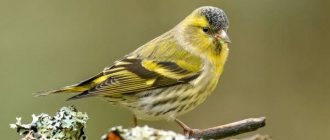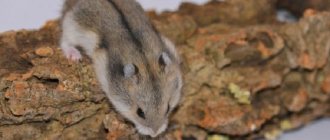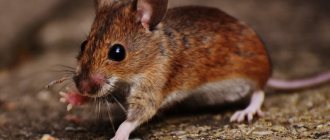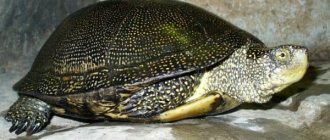Hedgehogs are unusual animals that are easily recognized by the dense layer of spines on their backs. Living over vast areas, they play an important role in the ecosystems of forests and plains. The animal has many features that attract the attention of biologists and are studied with great interest. He also regularly becomes the protagonist of cartoons and other creative works. There is now a large amount of information about hedgehogs, so anyone can get a detailed understanding of them.
Origin of the species and description
Most hedgehogs have a black nose that is always wet.
It is believed that hedgehogs appeared about 60 million years ago - this is exactly the age of the oldest discovered remains.
They adapted well to the surrounding world and quite quickly divided into several families. However, 33-23 million years ago, all but one ceased to exist for unknown reasons. The species now living on the planet belong to the surviving family Erinaceidae. Interesting fact : three main types of hedgehogs live in Russia: steppe, Eurasian and long-eared.
Hedgehogs are mammals and belong to the order of insectivores. The most common is the European one, which also has a second name – “ordinary”. The animal has common ancestors with moles and shrews. But the hedgehog has no relationship with the porcupine, whose back is also covered with quills .
How to choose a hedgehog breed for your home
There are the following types of hedgehogs:
African hedgehogs
They are divided into:
- Algerian.
- White-bellied.
- Somali.
- South African.
Algerian
White-bellied
Somali African Dwarf Albino
These hedgehogs love warmth and high humidity.
Steppe
- Daursky.
- Chinese.
Daursky
Chinese
This species prefers high temperatures, but not too high air humidity.
Eurasian
- Amursky.
- Eastern European.
- European.
Amursky
Eastern European
European
This genus is adapted to Russian conditions.
The best option for an apartment is the African pygmy hedgehog, because it is specially bred for keeping at home.
This species has good immunity and small dimensions.
Appearance and features
All types of hedgehogs are characterized by spines located on their backs. In adult individuals their number can reach up to six thousand, in young individuals - no more than three. The body length ranges from 25 to 35 cm, and the weight does not exceed 800 g. The tail grows up to 4 cm.
The animal's head is elongated, at the end there is a black nose, which always shines due to the moisture accumulating on it. The black eyes are set high, and round ears are visible above them.
A hedgehog's eyes look like black beads
Interesting fact : in the mouth of a hedgehog there are 36 teeth, with 20 located on top and 16 on the bottom. This distribution is necessary so that pairs of incisors growing on both jaws do not interfere with each other and do not disrupt the bite.
The paws have five toes equipped with claws; the forelimbs are shorter than the hind limbs. The back is covered with needles, their length is 3-4 cm. Inside they are hollow and filled with air. Their color contains white and brown areas, which is why the top of the animal looks heterogeneous in terms of color. The hedgehog also has fur: they grow between the needles, but in small quantities, so you can only see them close up.
The head and belly of the animal are covered with hair. It can be gray, brown and yellow-white.
Habitat - where hedgehogs live
Habitat of hedgehogs
The hedgehog has a fairly large habitat. The animal species live in Europe, Asia and Africa. Also, the found remains indicate that they once inhabited North America, but due to unfavorable conditions, local populations ceased to exist.
As mentioned above, the most common species is the common hedgehog. It is found in most European countries, the British Isles, and also in Kazakhstan. In Russia, it lives in the northwestern part and in Siberia. Relatively recently, the common hedgehog was artificially brought to New Zealand, where it quickly adapted and began to increase its population.
The animal prefers to live in forests and in areas where there are a large number of trees nearby. But it can also be found in plains, near bodies of water and on land overgrown with bushes.
Hedgehog in his hole
Interesting fact : hedgehogs do not live near swamps or in coniferous forests. But they meet regularly in cities.
Hedgehogs have their own den, which they build at the roots of a tree, in bushes or holes. If necessary, the animal is able to dig a hole, but it is always shallow in depth and does not contain forks.
Interesting Facts
How long do hedgehogs live?
In the wild, hedgehogs live no more than 5 years . A three-year-old individual can already be considered an adult. But in captivity, life expectancy increases to 8-10 years . Since in this case a person takes care of the animal, he does not need to regularly get his own food and think about how not to fall into the clutches of a predator. And since the hedgehog’s body is not subjected to significant stress, it lives several times longer.
Interesting: Tiger - Description, habitat, food, subspecies, enemies, photos and videos. Types of tigers. Where do tigers live and what do they eat?
Hedgehog food
Hedgehogs' diet is based on animal food, consisting of beetles, earthworms, frogs, mice, shrews, and lizards. The prickly resident feasts on various insects and their larvae, snails, slugs, and can destroy a bird’s nest with eggs or hatched chicks.
In general, gluttony and omnivorousness are explained by activity and the need to store subcutaneous fat. Hedgehogs are toothy animals: 20 upper and 16 lower teeth help them cope with a wide variety of foods. Berries and plant fruits can be an addition to animal food.
Hedgehogs especially need food after emerging from hibernation. To restore strength, the animal can eat up to 1/3 of its weight overnight. In captivity, hedgehogs willingly eat meat, eggs, bread, ice cream and even oatmeal. A misconception is the idea of a hedgehog as a lover of sour cream and milk. Such food is contraindicated for him due to lactose intolerance.
What do hedgehogs eat?
Hedgehogs are omnivores. They are able to eat both vegetation and meat. But most of their diet consists of various insects. Caterpillars, larvae, slugs, earwigs, worms, beetles, spiders - all these living creatures are quickly caught by the animal and eaten.
Despite their cute appearance, hedgehogs are able to cope with fairly large creatures. When necessary, they eat frogs, lizards and toads. And sometimes they penetrate bird nests, where they attack newborn chicks and eat the contents of the eggs. Hedgehogs also attack mice, but since rodents are quite agile and can run quickly, such collisions rarely occur. In addition to living creatures, hedgehogs also love vegetation. The animal is unlikely to pass by berries and fruits and will not deny itself the pleasure of trying them.
The hedgehog happily eats nuts and other fruits
Different species have different diets. For example, the New Zealand hedgehog prefers mainly plant food, but the ordinary one primarily looks for insects. Snakes can also become food for this animal. The poison in the cold-blooded fangs does not affect him. It is also unable to break through thorns. Thus, the hedgehog rushes at the snake without fear and wins if it does not decide to crawl away.
Due to its lifestyle, the animal is very voracious. Coming out of hibernation in the spring, it eats away to gain weight. And closer to autumn, he again begins to eat intensively to gain weight before the cold weather.
Contrary to popular belief, hedgehogs should not be given milk. They do not tolerate lactose well, but people often pour it into their pets.
What to feed at home?
Raw, lean meat, boiled liver, and fresh fish are ideal foods for hedgehogs. As delicacies, you can offer him live cockroaches, mealworms or
crickets. Hedgehogs will also happily eat apples and carrots.
People often wonder if hedgehogs can have milk. Let’s answer: no, you can’t, hedgehogs are intolerant to lactose, which is in milk, so milk can cause not only an upset stomach in a hedgehog, but even lead to its death.
Features of character and lifestyle
Hedgehogs are most active at nightfall, when they crawl out of their holes in search of food. At dawn they return back to the den, where they spend the whole day. Their homes are usually well hidden in bushes or in empty holes of other animals.
The hedgehog does not like uninvited guests in its territories
Hedgehogs are clean animals. They regularly remove debris stuck between the needles and lick their belly. And to get rid of the parasites that live on its back, the animal rolls in apples so that the acid from the fruit scares them away.
Interesting fact : poisons have practically no effect on hedgehogs. Arsenic, acid, mercuric chloride - all this has a weak effect on his body.
Each hedgehog has its own territory in its domain, which it carefully marks. If another individual invades these lands, a real fight begins, which continues until someone escapes.
The animal has poor eyesight, but it has well-developed hearing and sense of smell. It also has excellent spatial orientation, can swim, jump, and even run at a speed of 11 km/h.
Lifestyle
As permanent habitats, all hedgehogs dig secluded burrows under tree roots or in bushes. However, there are also lazier hedgehogs who, instead of digging holes on their own, prefer to occupy the abandoned holes of other animals, usually rodents.
Hedgehogs are nocturnal animals and lead a corresponding lifestyle, sleeping in their burrows during the day and going out hunting at night. At the same time, they are very sedentary homebodies and even during hunting they prefer not to stray far from their burrow-dwellings. Also, hedgehogs are individualists who lead a solitary lifestyle; they meet with their fellows only for the purpose of procreation.
How do hedgehogs winter
During sleep, hedgehogs curl up into a ball.
In October, when the temperature begins to drop, hedgehogs hibernate. Beforehand, they actively overeat for a month and try to gain as much fat as possible. This makes it easier for them to survive the cold. If an individual lives in warm regions, then it may not hibernate at all.
When an animal enters a state of suspended animation, its body begins to work completely differently. The pulse drops to 20 beats, and body temperature to 2 degrees. The intervals between breathing in a hedgehog increase significantly: 1-2 breaths per minute.
The animal emerges from hibernation in April. Moreover, having awakened, he can spend several days in the den and wait until the temperature outside rises to 12-15 degrees.
How to breed hedgehogs on your property?
In order for hedgehogs to feel comfortable, the site, at least along part of the perimeter, should have thickets of large shrubs - rose hips, lilacs, elderberries, deutia, and tall varieties of spirea. This could be, for example, a hedge or a group of bushes.
Interesting materials:
When is the raid updated in WWII? When was Germany formed as a state? When was the East European Plate formed? When were surnames formed? When was the Khanty-Mansiysk Autonomous Okrug formed? When was hmao formed? When to prune goji bushes? When to prune seedlings? When do classes for correspondence students usually start? When does your pension usually arrive?
Social structure and reproduction
In the spring, when hedgehogs come out of hibernation, their mating season begins. Already at the age of one year, individuals are able to have offspring. Having woken up, the males go in search of females, and several gentlemen can lay claim to one female at the same time. Then the fight starts. Its participants hiss and bite until a winner is determined.
After courtship, the male goes to his territory, and the female prepares for the appearance of offspring. Males do not help mothers in any way and do not participate in raising the young. The female is capable of producing offspring once a year.
Newborn hedgehogs under mother's protection
Pregnancy lasts one and a half months, and during this period the hedgehog manages to cover its den with leaves. From 3 to 8 animals are born at a time. The length of newborn cubs does not exceed 2 cm, and their weight is around 10 grams.
Interesting fact : newly born hedgehogs do not have spines, but after a couple of hours the spines begin to appear on the surface of the skin. In a few days they grow and become hard.
All summer the children live in their mother's den. By the 15th day they begin to see, and after a month they stop feeding on milk and switch to regular food. With the onset of autumn, they set out in search of territories that will become their new home. There, young individuals will begin to prepare for hibernation for the first time.
Interesting: Muskrat











